Carriglea Park Industrial School, Monkstown, Co. Dublin, Republic of Ireland
In 1894, the former Kilmore Probationary Industrial School for Roman Catholic Boys was transferred to new premises at the south side of Kill Avenue, Monkstown, near Dun Laoghaire. The new establishment became known as the Carriglea Park Industrial School. The School continued to be run by the Congregation of Christian Brothers, the manager of the institution being the Rev. Brother Thomas A. Hoope, who had founded the Artane Industrial School in 1870. Carriglea, at the south side of Dublin, was intended to be modelled on Artane, which was located to the north of the capital. Unlike Kilmore, which had received only younger boys, Carriglea (also known as Carriglea Park) operated as a full-scale Industrial School, taking those up to the age of 16.
The Carriglea site covered 40 acres and contained an old manor house which was used as the Brothers' residence. A two-storey L-shaped building was erected at its rear. The School was formerly certified for operation on 26 September 1894, with accommodation for 100 boys. The number of places was officially increased to 150 on 1 April 1896.
The School site is shown on the 1900 map below.
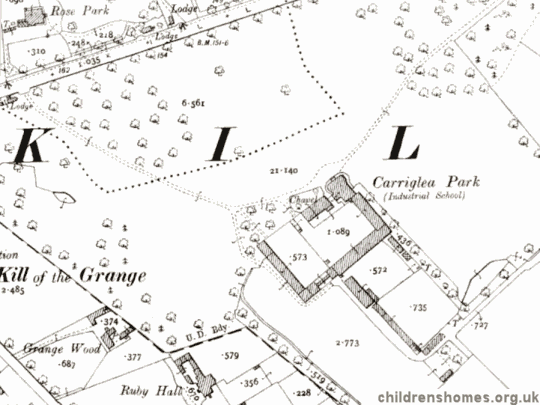
Carriglea Park Industrial School site, Monkstown, c.1900.
Following the death of Brother Hoope, Brother JP Kinahan took over as manager. He was succeeded in 1900 by Brother JT Butler, with Brother Kinahan resuming the role in 1906.
An inspection report in 1912 rated overall classroom performance as excellent. Mental arithmetic was said to be 'good', singing and recitation 'very good', and drawing and geography as 'excellent'. As regards industrial training, 72 boys had manual instruction and there were 23 tailors, 23 shoemakers, 7 carpenters, 14 agriculturists and gardeners, and 15 harness makers. The school band gave regular public performances. The boys did gymnastics and were given daily drill with dumb-bells and Indian clubs. The schoolrooms and dormitories were noted as being heated by open fires.
By 1925, the capacity of the School had increased to 250 places, rising to 260 places in 1944.
Following a decline in the number of boys being placed there, Carriglea officially closed on 30 June 1954. Of the 176 boys then in residence, 122 were transferred to Artane, eight went to Upton, seven to Greenmount, 20 to Tralee, and 19 to Glin.
The School site is shown on the 1900 map below.

Carriglea Park Industrial School site, Monkstown, c.1900.
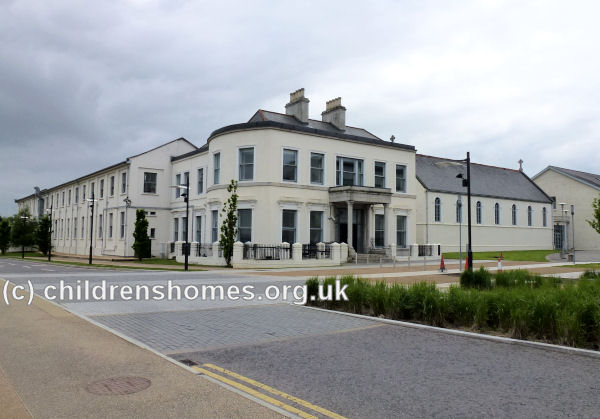
Former Carriglea Park Industrial School, Monkstown, from the north, 2014. © Peter Higginbotham
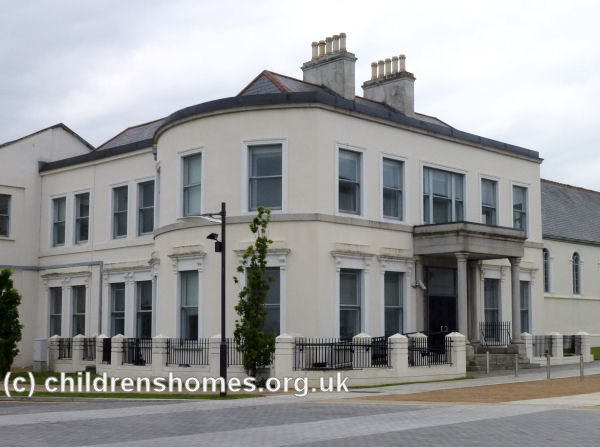
Original manor house at former Carriglea Park Industrial School, Monkstown, 2014. © Peter Higginbotham
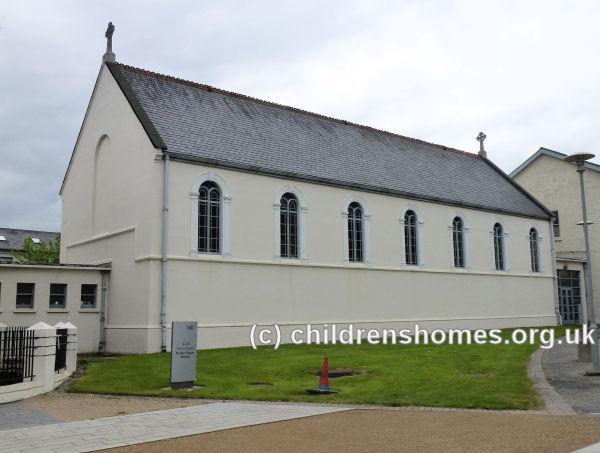
Chapel at former Carriglea Park Industrial School, Monkstown, 2014. © Peter Higginbotham
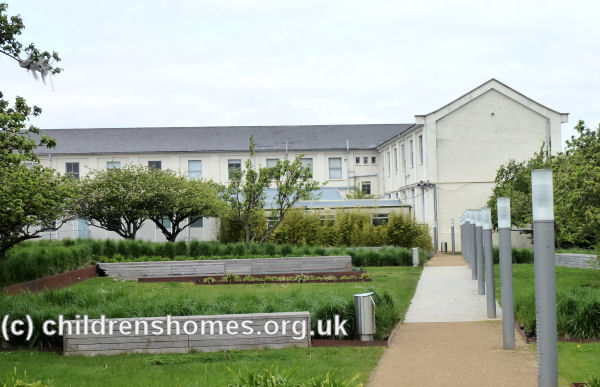
Former Carriglea Park Industrial School, Monkstown, from the south-west, 2014. © Peter Higginbotham
The buildings are now occupied by the Dun Laoghaire Institute of Art Design and Technology.
Carriglea was one of the institutions to be investigated by Ireland's Commission to Inquire into Child Abuse, launched in 1999. After reviewing extensive evidence and the testimonies of former inmates, the Commission concluded that over a period from the 1920s to 1954:
- Although the Christian Brothers received adequate funding, the boys did not receive reasonable food, clothing or accommodation.
- Chronic mismanagement, followed by a harsh and punitive regime, caused abuse of the children.
- Discipline was enforced by harsh and severe corporal punishment. Staff who had been severely criticised in other institutions for excessive physical punishment were transferred to Carriglea and introduced a level of violence, in the interests of order, at the expense of the boys' welfare.
- The Congregation made a considerable profit from the closure of Carriglea, which could have been used for the benefit of the children while it was operating as an industrial school.
- After 1940, no boy was given the opportunity of secondary education and trades training was poor.
- There was sexual abuse by two Brothers who served in Carriglea.
- There was emotional abuse caused by: the unruly and chaotic manner in which the School was run for a period; the subsequent introduction of violent Brothers to restore order; the predatory sexual behaviour and bullying by boys on other more vulnerable boys; the high turnover of staff; and the absence of recreation facilities.
- For much of the period of Inquiry, the School was dilapidated and run-down, with poor sanitary conditions.
Records
Note: many repositories impose a closure period of up to 100 years for records identifying individuals. Before travelling a long distance, always check that the records you want to consult will be available.
- Christian Brothers Province Centre, Griffith Avenue, Marino, Dublin 9. Email: archives@edmundrice.eu.
Bibliography
- Arnold, Mavis, and Laskey, Heather Children of the Poor Clares (2004, Appletree Press)
- Barnes, Jane Irish Industrial Schools 1868-1908 (1989, Irish Academic Press)
- Dunne, Joe The Stolen Child: A Memoir (2003, Marion Books)
- Rafferty, Mary and O'Sullivan, Eoin Suffer the Little Children: The Inside Story of Ireland's Industrial Schools (1999, New Island Books)
- Touher, Patrick Fear of the Collar: Artane Industrial School — My Extraordinary Childhood (1991, O'Brien Press)
- Tyrrell, Peter and Whelan, Diarmuid Founded on Fear: Letterfrack Industrial School (2006, Irish Academic Press)
- Wall, Tom The Boy from Glin Industrial School (2015, Tom Wall)
- Higginbotham, Peter Children's Homes: A History of Institutional Care for Britain's Young (2017, Pen & Sword)
- Mahood, Linda Policing Gender, Class and Family: Britain, 1850-1940 (1995, Univeristy of Alberta Press)
- Prahms, Wendy Newcastle Ragged and Industrial School (2006, The History Press)
Links
- Glencree Reconciliation Centre (former Reformatory site)
- The Commission to Inquire into Child Abuse
- The Commission to Inquire into Child Abuse
Except where indicated, this page () © Peter Higginbotham. Contents may not be reproduced without permission.


